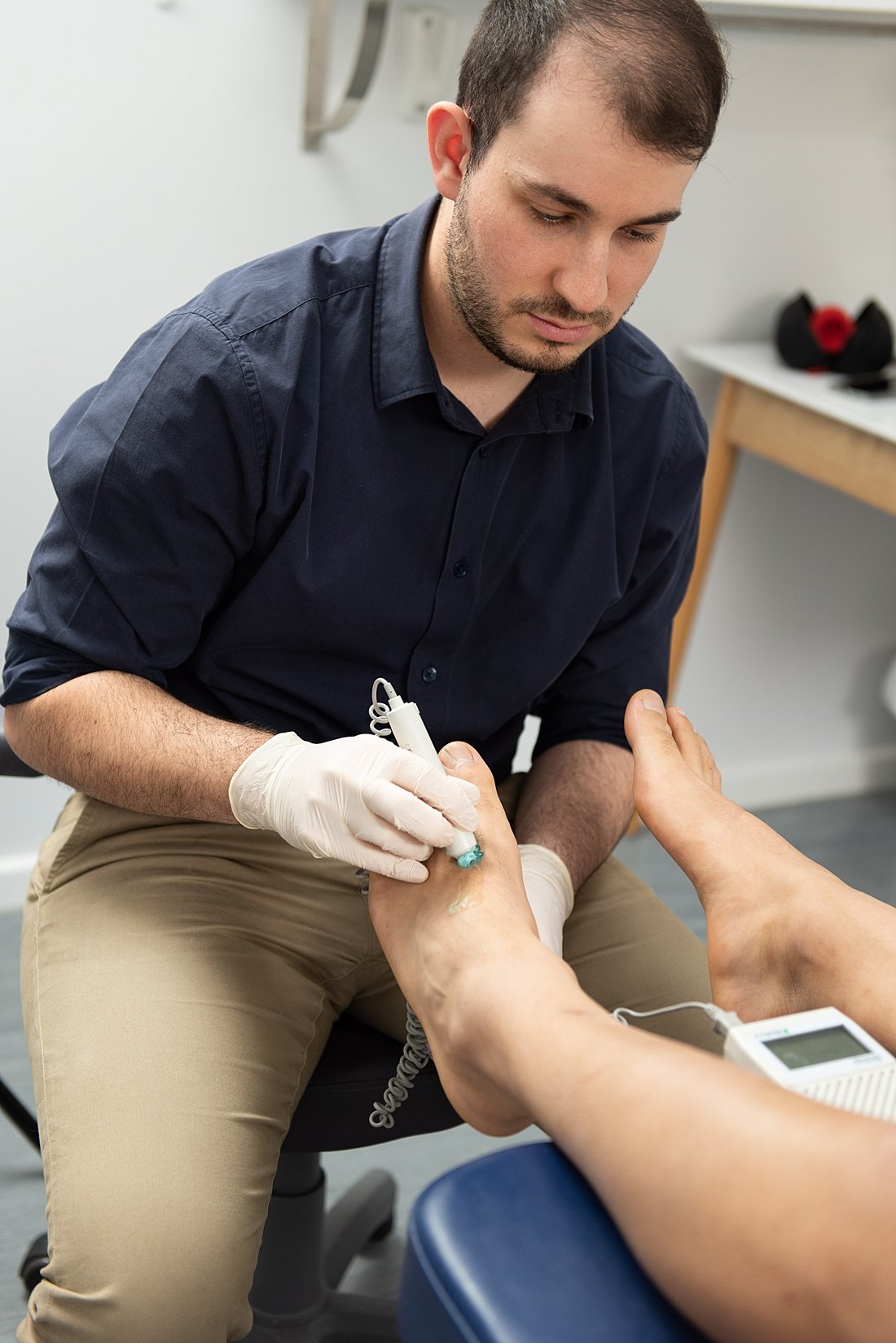DIABETIC FOOT ASSESSMENT
Diabetes is a common health condition in the community. There are 280 people diagnosed
with diabetes everyday. Many people with diabetes live a healthy and fulfilling life. Diabetes can have some complications, and the feet can be particularly at risk, because they contain tiny blood vessels and nerves. The main risk factors for patients are:
Peripheral neuropathy (loss of protective sensation)
Peripheral neuropathy can lead to ulceration, oedema and if left untreated, sepsis, osteomyelitis, and amputation. Regular check ups are crucial for high risk patients to assess numbness and protective sensation, structural or gait changes. Examination can detect minor loss of sensation and monitor and treat minor problems such as corns and calluses before chronic ulceration occurs.
Peripheral arterial disease (reduced blood flow)
Peripheral arterial disease is a common cause of foot ulceration. Cuts and abrasions can lead to major infections in patients with reduced blood flow. It is important to visually check your feet daily and seek immediate treatment by your health professional for this issues. If left untreated this conditions can lead to hospitalisation and possible amputation.

Structural deformity
Bone deformity, Charcot deformity and joint mobility problems resulting from conditions such as bunions, hammertoes and arthritis can lead to high pressure areas within the foot. These areas can predispose you to corns, callus and resultant ulcerations. Footwear plays a big role in this area and we know that 90% of foot ulcerations are predisposed by ill fitting footwear.
ASSESSMENTS
Patients with diabetes should have a foot examination by their podiatrist once a year to assess and monitor risk. If you are classified as high risk or have had ulceration or amputations in the past, then more regular assessments will be advised. The foot examination should assess protective sensation, foot structure, biomechanics, vascular status, skin integrity and footwear choices. Good foot care will halve the risk of disease-related amputation.
ALWAYS CONSULT A TRAINED PROFESSIONAL
The information in this resource is general in nature and is only intended to provide a summary of the subject matter covered. It is not a substitute for medical advice and you should always consult a trained professional practising in the area of medicine in relation to any injury or condition. You use or rely on information in this resource at your own risk and no party involved in the production of this resource accepts any responsibility for the information contained within it or your use of that information.
